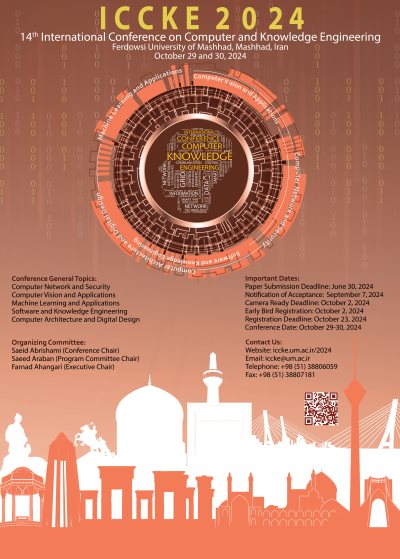0% Complete

Authors :
Keywords :
Abstract :
List of archived papers
Ashkan Moradi - Yasser Shekofteh - Saeed Zarei
Mohammad Jamshidi - Fatemeh Daneshfar
Ali Khaki - Ali Aghagolzadeh - Bagher Rahimpour Cami
Fatemeh Zahra Arshia - Mohammad Ali Keyvanrad - Saeedeh Sadat Sadidpour - Sayyid Mohammad Reza Mohammadi
Amir Mohammad Sharafaddini - Najme Mansouri
Ali Abedzadeh - Reza Ramezani - Afsaneh Fatemi
Mahan Veisi - Sadra Berangi - Mahdi Shahbazi Khojasteh - Armin Salimi-Badr
Atieh Mokhtari - Mohammad Taheri
Arghavan Irankhah - Sahar Rezazadeh Saatlou - Mohammad Hossein Yaghmaee - Sara Ershadi-Nasab - Mohammad Alishahi



